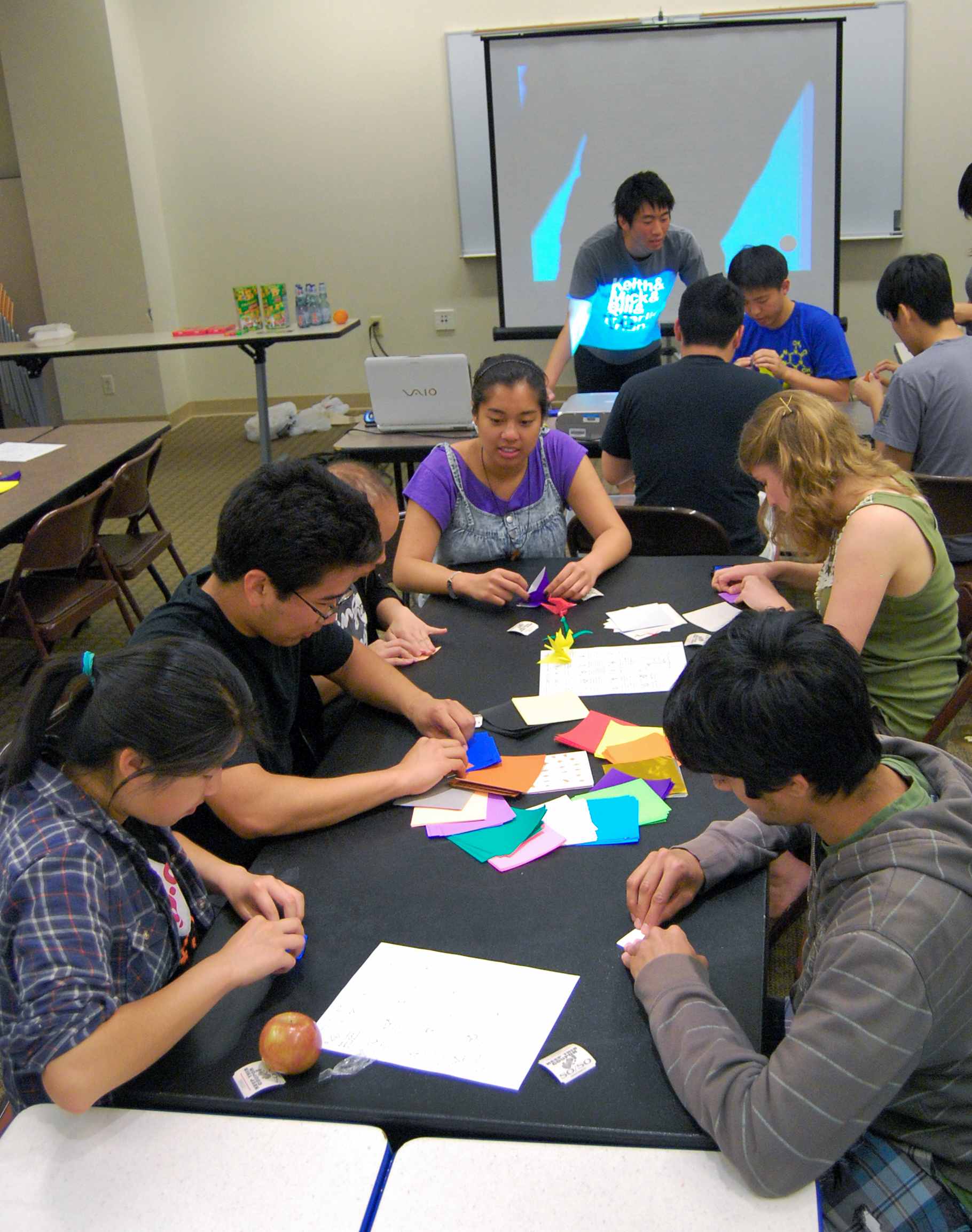Students participate in Cranes for a Cause to help Japan relief effort, send message of support

Students folded 1,000 paper cranes in Sproul Hall Friday night and will be collecting donations for Japan relief efforts.
By Andra Lim
April 18, 2011 12:09 a.m.

The fundraiser fostered connections between UCLA students and the devastation in Japan.
Hands fold squares of colored paper, aligning the edges to make a triangle. Then, fingers dig into the pocket of paper, popping out a rhombus, which closes back on itself to become a diamond. After a few more creases, they shape a beak and tug out wings, producing an origami crane.
At the end of five hours, the group of UCLA students had folded 1,000 cranes ““ enough to be granted a wish, according to Japanese legend. The students’ wish was that Japan would recover from the devastating earthquake, tsunami and aftershocks.
“Everyone took the time to make little pieces of paper something more,” said Kurt Ikeda, a student leader in Sproul Hall who organized Cranes for a Cause after hearing about similar events at other colleges.
In fact, students will be able to adopt the cranes for $1 in the latter half of this twofold event, said Ikeda, a second-year applied linguistics student. Proceeds will go toward the Red Cross.
Cranes for a Cause began collecting donations on Sunday night and will continue to do so during the week until all 1,000 have been adopted. Students who donate can write their names and messages for Japan on the paper birds, which will be displayed in Sproul Hall.
“This is more involved than just donating money. It feels like I’m actively doing something,” said Susie Lopez, a third-year anthropology student.
The purpose of the fundraiser is to create connections between UCLA students and the destruction that occurred miles away, Ikeda said.
Such ties are strong for Ikeda. His grandparents live in the Yamagata prefecture, on the coastline opposite the epicenter.
He heard about the earthquake the night before a final exam and stayed up until 3 a.m. watching a live stream on his computer. Especially vivid in his mind is footage of children stranded on the third floor of an elementary school.
Two days later, he was able to speak with his grandparents.
“They really put people into the figures. I knew the (earthquake) was a 9.0, but once I heard the stories, I really saw that it was a disaster,” Ikeda said.
There were sad stories about people losing loved ones, but also good stories ““ for example, his grandparents told him that some companies gave out free drinks. When Ikeda visits his grandparents this summer, he plans to bring along pictures of the 1,000 cranes and tell them his story about the marathon origami event.
Trina Dao, a student leader in Sproul who helped organize the event, said basing the relief effort off the well-known cranes legend makes it more meaningful and memorable.
Dao, a third-year psychobiology student, cried after reading the book “Sadako and the Thousand Paper Cranes” when she was young. The book tells the true story of a girl with leukemia who attempts to make 1,000 cranes with the wish of living longer.
Since then, she has created a personal ritual: When a friend is sick or stressed out, she folds cranes. She has never reached 1,000, but the ones she makes symbolize hope and affirm that life gets better, Dao said.
The legend also helped draw Lopez to the event.
As a student minoring in Asian humanities, Lopez had planned on studying abroad in Japan this summer ““ she’s been in love with the culture since reading her first manga years ago. But after the earthquake hit, she withdrew for safety reasons.
She said she’ll still make it to Japan, sometime. But for now, she wants to do what she can to help with relief effort.
Katrina Ramos, a second-year communications studies student, unfolded the metaphor between the act of origami folding and the students’ hopes for Japan.
“(Cranes) are very intricate but look simple. It takes time and patience to make something beautiful,” she said. “And it takes a lot of patience to sit through something so devastating, but you just need to be hopeful and hang on.”

